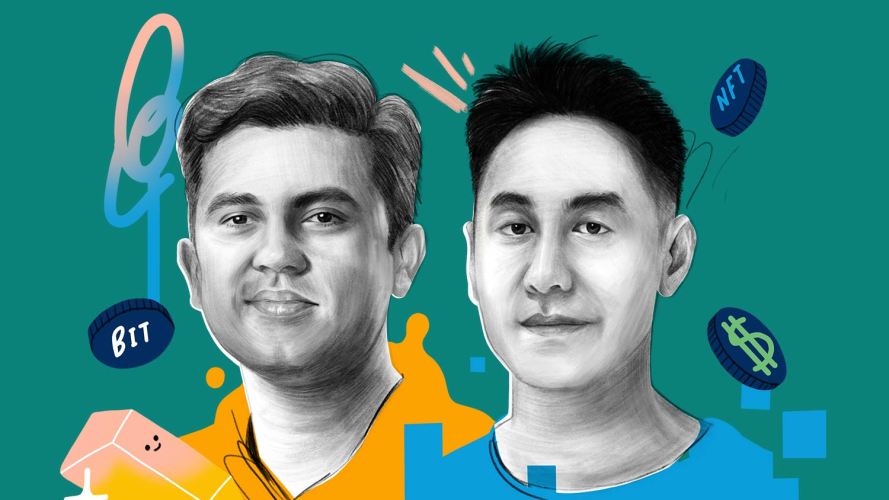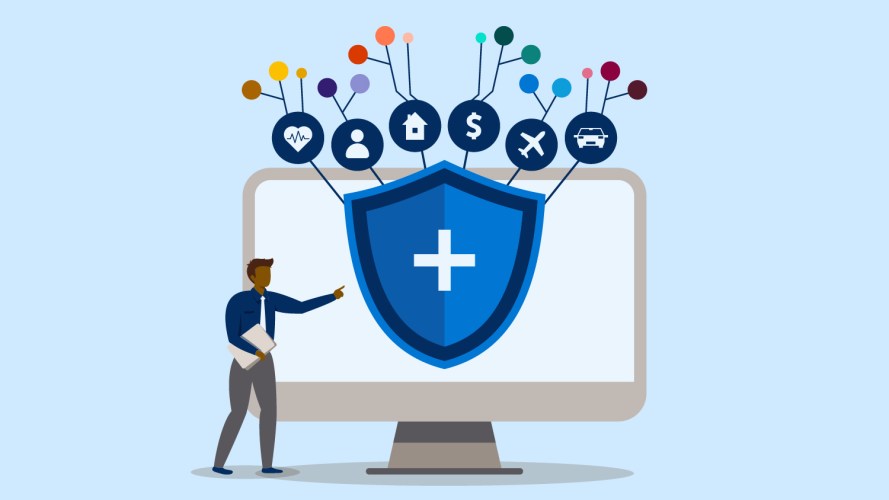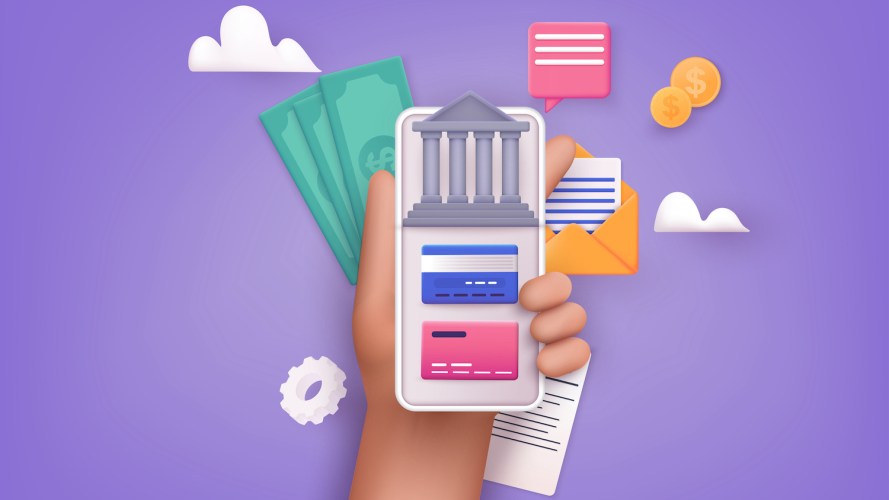Can You Trust NFTs? These Two Fintech Execs Have Thoughts



Two execs, one dealing in gold, the other in crypto. Both are redefining the fintech landscape and placing trust at the heart of their business.

Marc Mathieu
The latest business maxim instructs us that trust is the new currency. But currency itself—from cold hard cash to cutting-edge crypto—requires trust in those who trade in it and the systems that oversee it. Here, we bring together two executives who have tried to foster that trust in divergent arenas: the physical world of gold-based lending and the digital investing world of non-fungible tokens, or NFTs.
Sumit Maniyar is the founder and CEO of Rupeek, an Indian fintech company whose mission is to unlock credit in its home country, where unsecured credit has some of the highest interest rates in the world. In India, 95% of household wealth comprises physical objects and real estate while only 5% comes in the form of shares or mutual funds. Rupeek enables families in India to take out gold-backed loans using a safe, seamless tech-led digital experience.
“The infatuation with gold is not stopping,” Maniyar says. “We still import about $35 billion worth of gold every single year into the country and hardly monetize a fraction of it.”
Matthew Liu is co-founder of Origin Protocol, a blockchain platform that seeks to make Web 3.0 products—including a stablecoin, a marketplace platform, and a token—accessible to the masses. The brand has brought on Paris Hilton, the hotel heir and reality star, to serve as a strategic adviser.
“Web 3.0 is all about empowering the people with this new concept of digital ownership,” Liu says of the internet’s next iteration, being built on decentralized blockchain platforms. “We’re really on a mission to help push Web 3.0 forward, but in a way that makes it really easy for the multiple billions of people that are currently using Web 2.0 to be able to migrate over smoothly.”
While very different in their aims, Maniyar and Liu both require buy-in from the customer and trust in the financial process. How is that accomplished, and what can these two leaders learn from each other?
Marc Mathieu: Sumit, your mission is really to create equal access to credit for every family in India. I understand there are trillions of dollars’ worth of household gold in India that can be unlocked through digital innovation. How do you do that?
Sumit Maniyar: Gold in India is considered a family crown jewel, and its role is in part symbolic: to show the social dominance of arriving in life, providing for your family, and doing well. For this reason, a lot of people feel ashamed when they have to take capital against their gold and put it up as collateral. The irony is, because of this, we have 2 trillion dollars’ worth of gold, but only about 70-odd billion has come back into circulation every year. You could potentially solve a huge amount of credit mismatch in our country by unlocking these. For example, we launched a gold-backed card, where people can deposit their gold, get a credit card, and use it to purchase goods and manage their working capital better. In a way, this unlocks the debt asset at their home and provides them liquidity at a very reasonable rate.
Mathieu: Matthew, you’re on a very different end of the spectrum because you operate in the so-called trustless and permissionless world of Web 3.0. How do you build trust in that environment?
Matthew Liu: One of the big underlying premises about Web 3.0 is that you can get a bunch of different actors in an ecosystem, who don’t necessarily trust or know each other, to act together in a system that guarantees trust. The system is self-policing in blockchain. In fact, as Sumit was talking about these collateralized loans, where gold is the backing asset, it actually reminded me a lot of the things that we are seeing in decentralized finance, where, for example, I can take my wrapped Bitcoin or Ethereum, put that up as collateral, and then take a loan out from the system. But what’s really interesting here is that the system is just a set of smart contracts on the blockchain. And as long as people are interacting with it, it remains permissionless and trustless.
Mathieu: Sumit, you deal in a very tangible world, a world of gold. What similarities do you see between your world and the world of Web 3.0 and blockchain and NFTs?
Maniyar: We are both making things simpler for the customer, providing them diversification, capital access, or enabling transactions to unlock their household income. I think those premises remain the same largely. It’s the manifestation of how it happens through technology that’s going to change. On a lighter side, both of our asset classes are rooted in speculation and intrinsic value. The fear and greed cycles are going to dictate both worlds. It’s just that gold has been there for many thousands of years, and there are a lot of believers. The same is going to be the case for cryptocurrencies gradually. The volatility might be different in the two sectors today, but eventually they are going to stabilize and become part of portfolios.
Mathieu: You are both in a way decentralizing finance. Maybe, Matthew, you have ideas for Sumit about how he can use Web 3.0 in the world of gold loans?
Maniyar: I’m going to hold Matthew to that and probably connect separately and take some tips!
Liu: You know, we’re already starting to see a migration of real-world assets onto the chain, and we have actually seen some blockchain projects that use gold as a backing asset. And we don’t need to limit it to things like gold or stocks. We’re also seeing this in the NFT world, where NFTs are starting to represent less liquid assets. NFTs themselves oftentimes are digital art, but sometimes NFTs can be used to represent a physical art piece, or a Rolex, or a Hermes bag, or a piece of real estate. And these are all digital representations of these physical assets on the chain.
Maniyar: Matthew, one thing has always intrigued me: How do you put value to these assets? How much of that is intrinsic? How much is speculative? Is there a quantitative model?
Liu: Great question. It’s a little bit like investing in the dot-com boom. There were certainly periods of time where the hype was way beyond the technology, and we saw that crash in 2000. But if you had a long-term perspective and continued to deploy capital after the crash, then you might have been investing in Amazon, or maybe you did the seed deal in Google or Facebook. Our industry has actually seen some of these boom-and-bust cycles already. And in the short term, there’s a lot of volatility. The valuations are difficult, and there will certainly be cryptocurrencies that die because the underlying projects don’t achieve anything. But the asset class as a whole, if you look at it from a long-term time horizon, it’s gone upwards into the right. And I’m very confident it will continue to do that.
Maniyar: I really like your analogy on how the dot-com crash and the value creation that continued afterward.
Liu: Sumit, your business employs a bunch of people, there’s the complexity of dealing with regulations, et cetera on the backend, but you’ve been able to simplify the front-end experience for your users. What do you think are some of the things Web 3.0 needs as an industry to build the same user experience—so that it’s not so large and intimidating but easy for users to understand?
Maniyar: I think the most important thing is for people to believe in a brand that takes care of them in the Web 3.0 world. It’s a complicated world. A common person would probably not want to go into the details of stitching it together or understanding regulations. Focus on creating that consumer-facing brand—it might end up becoming equally as important as building the infrastructure itself. Because after a while, a lot of infrastructure plays are going to get commoditized—I don’t mean to undermine the efforts, it’s just that it’s natural evolution. So I think larger and stronger brands will emerge by focusing on customers and winning their trust.
Create and deploy NFTs on a trusted platform
It’s a new world. You need to launch your brand into new digital worlds, link data, communities and wallets. Need help?


























